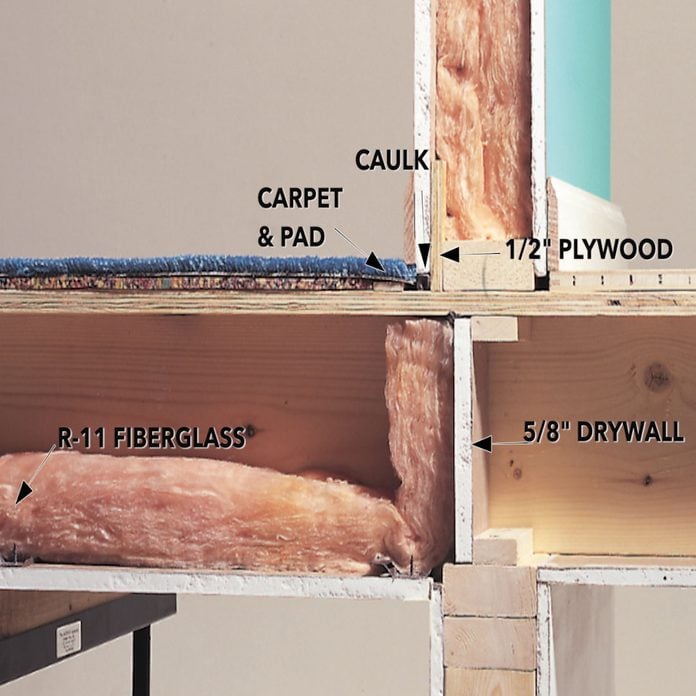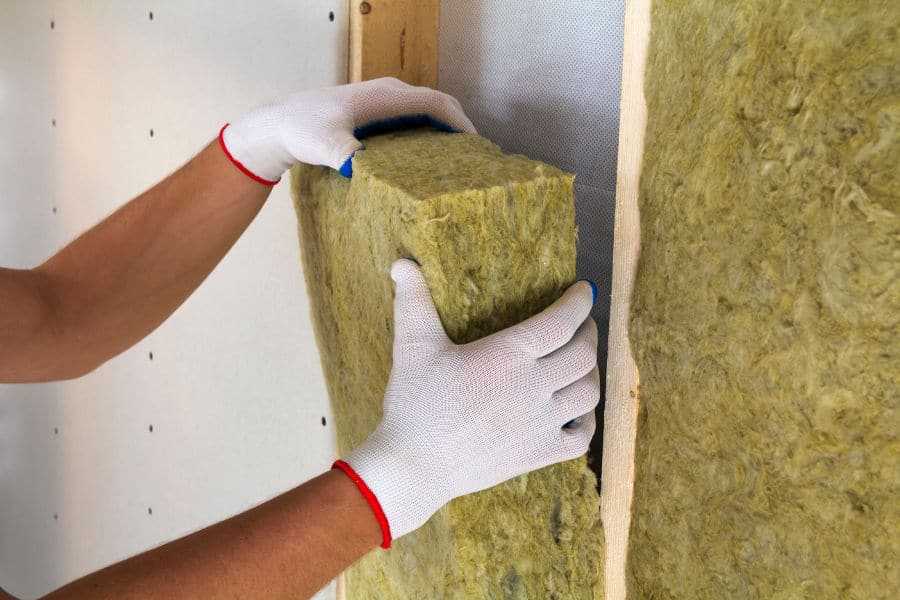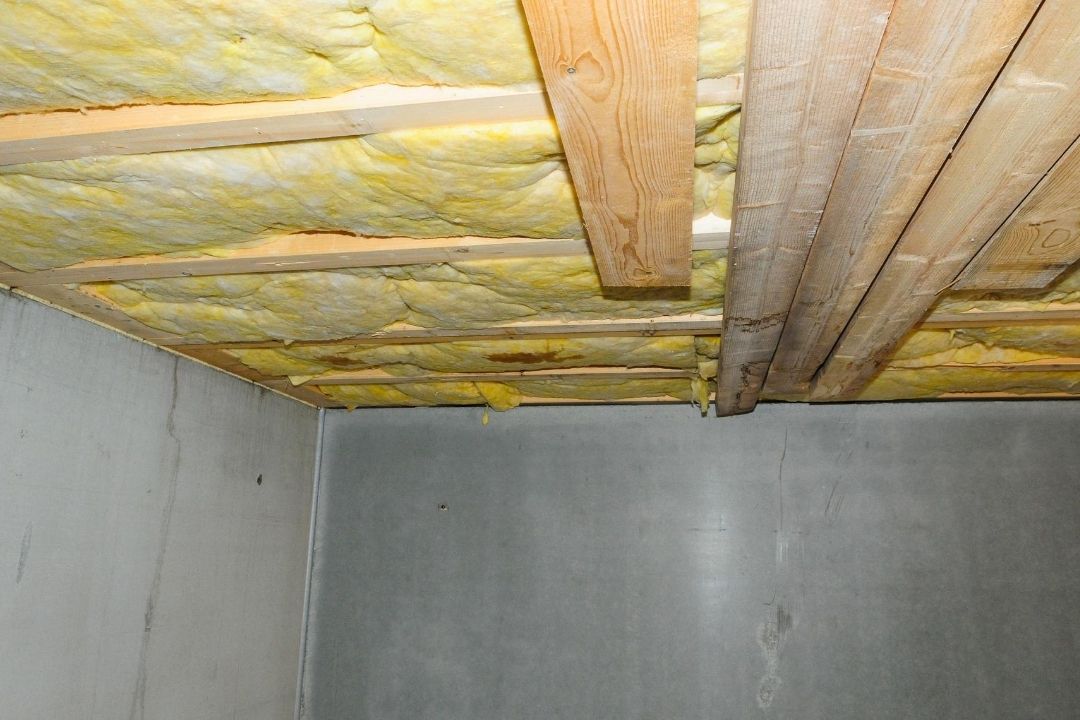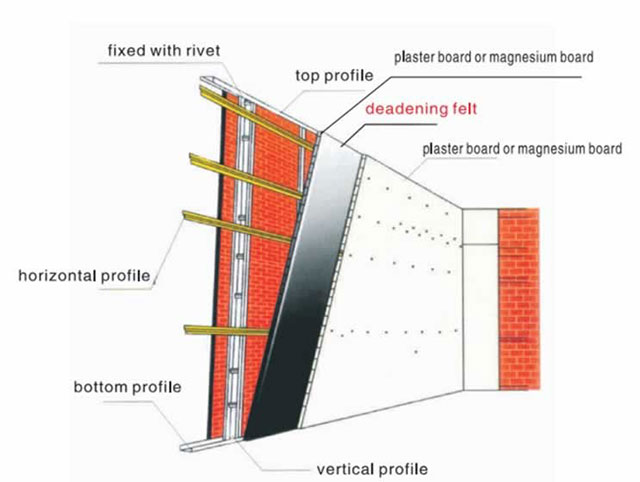Featured
Table of Contents
- – The Best Way To Soundproof Your Home: Insulation
- –
- – Best Soundproof Insulation Materials
- – Understanding Basics Of Sound Transmissi...
- – STCs to Consider in Your Home
- – Insulation Noise Reduction
- – Types Of Soundproofing
- – Different Types Of Insulation
- – Fiberglass insulation
- – Multipurpose transmission classes (STCs), u...
- – Batt Insulation
- – Foam Spray Insulation
- – Insulation
- – Roxul Rockwool Acoustical Mineral Wool I...
- – Acoustimac Eco Cellulose Insulation
- – Foam It Green Spray Foam Insulation
- – Mineral Wool vs Fiberglass Insulation Bo...
- – Mineral Wool Panels vs Fiberglass Panels
- – Cellulose or Fiberglass Batts/Panels
- – Cellulose vs Roxul Rockwool
- – Cellulose or spray foam
- – Roxul Rockboard panels vs Rigid Foam
- – The benefits of soundproofing insulation
- – Move Electrical Boxes
- – Seal the boxes
- – Insulate The Walls
- – Doors
- – Absorption
- – Insulation made using mineral wool
- – Cellulose Insulation
- – How To Soundproof Your Room With The Best Insu...
- – The Definitive Guide To Insulating For Soundpr...
- – The Best Type Of Insulation For Soundproofing:...
- – 5 Best Types Of Insulation For Soundproofing (...
- – How To Soundproof Your Room With The Best Insu...
- – Reduce Noise Pollution In Your Home With Thes...
The Best Way To Soundproof Your Home: Insulation
Soundproofing your ceiling is an effective way to stop sound from entering your house. The ceiling can be soundproofed in a relatively simple and affordable project. There are many different types of soundproofing materials that can be used for this project, including acoustic panels and foam tiles. Here are some tips and tricks to ensure that these products are properly installed.
Best Soundproof Insulation Materials
There are many kinds of soundproof insulation that can be used to insulate your house or workplace. There are many options, but not all of them are the same. Some might be better at blocking out sound than others, while some could be more costly than others.
Noise pollution has become a significant problem in many major cities around the world.
This mineral wool fiberglass blown into cellulose spray foam insulation foamboard can be a great choice for your home. It is soundproofing, heat retention, and protects walls from moisture damage.
We are exposed to thousands upon thousands of noises every day in our homes. Acoustic insulation materials can help improve our comfort.
Airborne sounds, sound waves that travel through an airspace, are sounds like vehicles, radios, conversations, and dogs barking. Toys and glass can also fall on the ground, and people may walk on wooden floors. Flanking noises travel from walls to ceilings, through floors and under walls. It can be difficult to control flanking noise and it takes time.
Understanding Basics Of Sound Transmission
Sound is a wave of pressure that travels through the air. Although sound can be heard by the human ear, they cannot be seen and felt. Sound waves travel at different speeds depending on their wavelength (the size of waves).
Sound waves travel through air at different wavelengths. The frequency is lower for those with shorter wavelengths and vice versa. The frequency of the crests is determined by how far apart they are. The frequency of sound waves is lower if they are closer together. In addition to the distance between the two speakers, there are other factors that determine how loud they will sound. The louder they will sound, the larger the room and the more people there are,
Hertz is the unit of frequency. The Hertz measure frequency.
Sound waves are controlled by materials that absorb them or block their transmission. Fiberglass absorbs sound more efficiently than other materials, due to its density.
An average home with 40dB will be quiet. On the other hand, a noisy home will have more than 100dB. Higher numbers will make the material more effective.
STCs to Consider in Your Home
A quiet home should have a higher rating than STC40. STC 56 should be used for bathrooms and living rooms. STC 60 should be used for bathrooms and living areas. STC 33 is applicable to walls of 2x4 with 1/2" drywall on each side.
Insulation Noise Reduction
You need to soundproof your house before starting construction. If you're just beginning a construction project and don't know how to soundproof your home, we can give you some great tips.
There are many ways to ensure you have a high-quality soundproofing job. It is important to understand what sound insulation does. It is an important feature for any home or business because it helps to keep noise levels down as well as reduce vibrations throughout the building. The vibration from running motors, vibrating appliances like air conditioners and fans, as well as music played by radios or televisions can all cause issues for those who live in homes with poor soundproofing.
Sound Dampening
Walls can absorb sound and also reflect it. Insulation can reduce the reverberation and make them less annoying. Acoustic insulation can absorb sound waves to reduce the echo effect. An STC for a 2x4 wall is 34. Acoustic insulation has a rating of 80.
Insulation increases the value of your house by keeping heat out while keeping cold in. Sound insulation will increase the rating of your walls. The strength of your walls is increased by using metal studs. Drywall can reduce noise from your home.
The steel studs hold up the drywall. Sound insulation is increased by 49% if 5/8" is used in place of 1".
Types Of Soundproofing
On the other side, soundproofing is dominated primarily by two types of products: fiberglass and drywall. While drywall is more common in older homes than it is in newer ones, it's still a viable option for those looking to increase their home’s energy efficiency. Fiberglass insulation is becoming more popular due to its ability reduce noise and improve energy efficiency.
Insulation can be either acoustic or mechanical. To absorb sound waves and prevent vibrations affecting sensitive areas like floors or windowsills, mechanical insulation is foam, metal-studs and steel beams. It seems simple enough: add insulation to the house. But how do you know which type will work best for
Make walls, ceilings, floors and furniture sound less. They can trap sound waves, are porous and light.
Sound blockers are often thick, heavy materials that reflect sound waves. They don't emit as much noise.
Noise transfer from different rooms can be reduced by using isolation walls. Clips may also be used.
Different Types Of Insulation
The mineral wool can be used to insulate. This material absorbs sound and vibrations from both airborne and impact sources.
Fiberglass is an insulation type that is used for insulate homes.
Spray foam insulation for sound control is a polyurethane type that is sprayed onto walls to insulate. It reduces noise by upto 95%
Extruded plasticstyrene may be used to create both blue and red foam boards. ISO panels are more efficient insulation than either the blue or pink foam board.
A panel made of polystyrene helps reduce noise in a room.
Fiberglass insulation
Which insulation is best? The answer depends on the features you want in your home and how it is insulated. It also depends on which noise-reducing devices are available at the time. Companies have been trying to innovate to make their products more appealing than the ones offered by competitors. This has made the soundproofing industry more competitive. Manufacturers are able to use less material, but still produce quality products.
Electronic Sound Absorption and Cancellation Systems (ESAC systems) work by converting electrical energy to acoustic. This energy is transmitted through walls, ceilings, or directly onto the originating audio source.
Fiberglass insulation is made by melting plastic and spinning it into long, strands. Fiberglass insulation allows cold air to escape in the summer and retains heat during winter.
A thicker Batt can decrease STC by approximately one point. In addition, sound waves are reflected back at the source more often.
Fiberglass insulation offers flexibility. Fiberglass Insulation has a NRC rating at 0.85. R11 insulation is 0.95. R19 insulation is 1.
Fiberglass insulation has a high efficiency at keeping heat in your home.
Fiberglass batts can be used for insulate walls, ceilings and roofs. Semi-rigid Batts can be used to insulate irregularly shaped cavitites, floors, or ceilings. Rigid batts are suitable for installation in walls, floors, ceilings, floors, or around ductwork to reduce noise transmission, echos, and feedback.
Owens Corning's pink unfaced insulation rolls measure 23" x39". They can be attached between beams, truss or studs. It adds 6 inches of insulation and has an R19 value. However, it can be mold and moisture-sensitive. If not compressed, it can improve sound absorption on floors and walls.
Owens-Corning 703 is a lightweight acoustic insulation. It can be applied to ceilings, walls, or hanging frames in either 2" or 4" Acoustic fabric should be used to cover it, to prevent the fibers from flying.
Owens Corning 2” thick Soundproofing Insulations are 10.3 lbs/ft3 in density with an added STC 18 . This improves the overall sound quality.
Multipurpose transmission classes (STCs), up 53 It has an insulation valued of 1.0. It performs better at higher frequencies that lower ones. However, low-frequency noises are still a concern.
Mineral Wool
Mineral wool insulation is made of many different types. It is extremely strong and durable. It is also water, fire, and moisture resistant. It is also sound-proof. It is dense at 8.5 pounds per square foot.
Mineral wool insulation is stiffer and denser than fiberglas. It is less likely to slouch, or cause noise transfer areas. This prevents sound transmission.
Acoustic tiles reduce noise and echo.
Batt Insulation
A batt insulation wraps around the wall. This insulation comes in different thicknesses, depending on the area.
The batt insulation is already rectangular in shape so it can be easily installed. Base material may also affect the product's soundproofing and thermal barrier properties.
Fiber glass is used to make batt insulation. It's tough. Fiberglass can be used to make batt insulation.
Mineral wool insulation has a reputation for being easy to put in and affordable.
Foam Spray Insulation
Polyurethane foam spray is great for insulation in unusual-shaped areas. However, it's most commonly used to insulate attics which are not completed.
Liquid foam insulation can be applied to walls and floors by spraying it. To apply it, you can use a pressure washer. Foam insulation is slow to dry and flexible when it's soft. Foam insulation is used for insulate buildings.
While liquid foam insulation doesn't provide fireproofing, it does offer some thermal resistance. It may be necessary to add materials to it in order to comply with code.
Insulation
Blowed insulation looks very similar to spray foam. Be aware that it may spill out of new walls and it will not work with them.
Roxul Rockwool Acoustical Mineral Wool Insulation
Various manufacturers use rockwool soundproofing. This can be used to make bass traps, acoustic panels or other special effects.
You can buy 6-pound units of rockwool acoustic-wool insulation.
Rockwool can be described as a form or fiberglass insulation that is used in building construction.
Rockwool makes high quality insulation. It is used to insulate buildings and homes. It is fireproof and waterproof.
Acoustimac Eco Cellulose Insulation
This ecocellulose insulation makes a great selection.
This material is made of recycled materials. It is also environmentally friendly. It is people friendly. It doesn't contain volatile organic compound (VOCs). It is very easy to cut, and it is easy to install. It is an excellent insulating material.
These panels are ideal for protecting your home and office from high-frequency sounds, such as sirens, explosions, gunshots, and sirens. If you are close to windows or other openings, you will hear them better. However, they will not protect you against low-frequency noises like car engines or footsteps.
Acoustimac Insulations' fire rating is Class A.
Foam It Green Spray Foam Insulation
This foam insulation is used for sealing or insuring areas. It can be applied in less than five seconds.
This foam insulates and seals air instantly. One inch insulation. This is what you will get:
The 15 foot hose has 10 nozzles and fan spray tips. Your application gun is yellow and blue.
This foam can also be used as insulation. Use a slower-rising foam instead.
How soundproof insulation is installed.
Mineral Wool vs Fiberglass Insulation Boots
Although mineral wool batts cost more than fiberglass batts they are much more efficient. They are stronger and more sound-absorbing. Fiberglass batts can be cheaper, but they are less sound-absorbing.
Mineral Wool Panels vs Fiberglass Panels
Panels made of mineral wool can have an STC range of 45 to 52 with an NRR of 0.95 to 0.99. Both can be used to absorb sound and reverberations.
Cellulose or Fiberglass Batts/Panels
Bats are mammals that fly around looking for insects.
Cellulose vs Roxul Rockwool
Cellulose is a fiber made up of long chains that contain sugar molecules. They have an NRF rating rating rating of 1.1. This makes them an excellent sound absorber.
Cellulose or spray foam
Cellulose's STP range is 44 to 68. NPR range is 0.8 to 0.99.
Roxul Rockboard panels vs Rigid Foam
Rigid foam is used to manufacture insulation, soundproofing material, and other products.
Roxul Rockboards provide excellent sound absorption and reverberation.
The benefits of soundproofing insulation
Noise is distracting. You can use mineral wool insulation to block outside noise.
Because mineral wool doesn't absorb cold or heat, it is great for soundproofing homes. People believe that it will increase the value of their home.
Move Electrical Boxes
Make sure that electrical boxes can be separated by only one wall stud. This will allow you to later use the 5/8-inch and 1/2-inch resilient drywall.
Always ensure that your boxes are easily accessible.
Seal the boxes
Electrical boxes sealed with Acoustic sealants should be used. Silicone caulks should be used to seal cracks in the walls.
Insulate The Walls
Fiberglass batts should be placed in cavities. Use a utility knife to cut fiberglass. Eye protection is recommended.
Doors
Doors should always have high Sound Transmission Class ratings. Door STC ratings can be improved with sound channels and insulation. However, if you spend too much time insulating walls, you could lose some of its benefits.
Solid core wooden doors have a STC of approximately 28. Acoustic wood doors have an STC between 30- and 50. It is best to find a supplier that specializes in commercial construction.
Absorption
Acoustic panels (or acoustic foam board) can absorb sound. For better acoustics, these panels must be correctly installed.
Soundproofing can be an essential component of any building or room. Combining several soundproofing methods can produce better results than one.
Soundproofing in buildings is essential. Different insulations have different strengths.
Insulation made using mineral wool
The mineral wool is made of either rock or glass fibers. Resistant to fires, it does not absorb water.
Cellulose Insulation
Because of its low density it is very easy to cut, and then install. Cellulose insulation is lightweight, so it doesn't add much weight to walls. When used as panels or batts for insulation, cellulose has a very high R value at approximately 4/inches (R-4). It can be used in ceilings, walls, attics, and ceilings of houses and buildings.
Cellulose insulation is a great soundproofing material. It absorbs noise well, and does not absorb heat or cold. Cellulose insulation comes from recycled paper products like newspapers and cardboard boxes. The fibers are made into strands which are then compressed into pellets. This creates cellulose fiberglass, which can be molded to any shape.
Cellulose insulation can be described as plant fibers used to insulate wall cavities. Their ability to trap air and noise means they are more efficient at noise insulation.
Specifically, you'll desire to note where every one of the various electrical boxes as well as cords are and just how much room they use up. TPEditor.com. That will certainly permit you to modify the batt prior to you place it right into the walls (www.TPEditor - Soundproofing TPEditor.com.com). Step 3: Prepare, One more point before you can deal with insulation see to it you've obtained all the equipment you require: Old garments.
How To Soundproof Your Room With The Best Insulation


Safeguard on your own before you begin installing the insulation. An utility blade for reducing the batt insulation down to dimension and suitable it around electric boxes (TPEditor.com).
The Definitive Guide To Insulating For Soundproofing
Tip 4: Cut the Insulation, Since you have your gear, you can take care of the insulation - TPEditor.com. Nevertheless, if you aren't intending on setting up the insulation as quickly as you get it, don't unbox it - Soundproofing TPEditor.com - TPEditor.com. www.TPEditor.com (TpEditor.com). Fiberglass, particularly, might irritate individuals with breathing troubles, as it launches tiny fragments into the air when you manage it (www.TPEditor.com).
The Best Type Of Insulation For Soundproofing: How To Stop Noise From Entering Or Leaving Your Home
As I have actually discussed, the insulation will most likely be as large as the wall surface studs, so you'll just have to cut the elevation you require. You can put the batts in as you reduced them, as well as reduced out the pieces for electrical boxes as needed. Tip 5: Place In the Installation, I in fact favor doing this component with a number of helpers (Soundproofing TPEditor.com).
5 Best Types Of Insulation For Soundproofing (2022)

It just makes the whole process simpler. Keep in mind to press the batt with the face directing toward you. That is, if you bought insulation that has a clear distinction in between the front and the rear end - TPEditor.com. Press as well as tug the material to make sure that it completes the entire space. Ultimately, utilize the staple gun to connect the paper lining to the wooden stud every 7 inches.
How To Soundproof Your Room With The Best Insulation

Step 6: Cover It Up With Drywall, If you've set up whatever you desired inside the walls, you'll most likely desire to cover points up at this point. TPEditor.com. Which ones do you choose?
Reduce Noise Pollution In Your Home With These Easy Tips
What insulation is the best for soundproofing
Fiberglass insulation
What R-value should I use for soundproofing?
If someone asks us what R-value we recommend for soundproofing, we can tell them that R-13 or R-19 are the best choices for any R-valued material. For outside walls, R-13 to R-23 are the most common.
Is a higher R-value a sign of better soundproofing?
R-values greater than 10 indicate more effective insulation. While any insulation can be used to reduce energy consumption, it will not soundproof walls. However, you can make significant noise-dampening improvements by adding more insulation.
What does it take to make insulation soundproof?
Foam insulation can reduce sound transmission by up to 80 percent. RetroFoam of Michigan, which has been helping homeowners dampen the sound in their homes since 2002, understands how sound is transmitted.
If you're dealing with the cooking area, drywall may be a much better fit. Conversely, if you're constructing your restroom, drywall would be the way to go. www.TPEditor.com. Extra Steps You Can Take to Shield Walls and Ceilings, On the various other hand, if you decide that insulation and also drywall alone won't reduce it, there are various other actions you can take while you have the wall surface studs subjected.
Table of Contents
- – The Best Way To Soundproof Your Home: Insulation
- –
- – Best Soundproof Insulation Materials
- – Understanding Basics Of Sound Transmissi...
- – STCs to Consider in Your Home
- – Insulation Noise Reduction
- – Types Of Soundproofing
- – Different Types Of Insulation
- – Fiberglass insulation
- – Multipurpose transmission classes (STCs), u...
- – Batt Insulation
- – Foam Spray Insulation
- – Insulation
- – Roxul Rockwool Acoustical Mineral Wool I...
- – Acoustimac Eco Cellulose Insulation
- – Foam It Green Spray Foam Insulation
- – Mineral Wool vs Fiberglass Insulation Bo...
- – Mineral Wool Panels vs Fiberglass Panels
- – Cellulose or Fiberglass Batts/Panels
- – Cellulose vs Roxul Rockwool
- – Cellulose or spray foam
- – Roxul Rockboard panels vs Rigid Foam
- – The benefits of soundproofing insulation
- – Move Electrical Boxes
- – Seal the boxes
- – Insulate The Walls
- – Doors
- – Absorption
- – Insulation made using mineral wool
- – Cellulose Insulation
- – How To Soundproof Your Room With The Best Insu...
- – The Definitive Guide To Insulating For Soundpr...
- – The Best Type Of Insulation For Soundproofing:...
- – 5 Best Types Of Insulation For Soundproofing (...
- – How To Soundproof Your Room With The Best Insu...
- – Reduce Noise Pollution In Your Home With Thes...
Latest Posts
Crucial Questions to Ask When Researching Best Kitchen Appliance Brands
Expert Hints for Choosing Reliable, Versatile Kitchen Devices
Choosing Culinary Appliances With the Best Safety Features and Durability
More
Latest Posts
Crucial Questions to Ask When Researching Best Kitchen Appliance Brands
Expert Hints for Choosing Reliable, Versatile Kitchen Devices
Choosing Culinary Appliances With the Best Safety Features and Durability